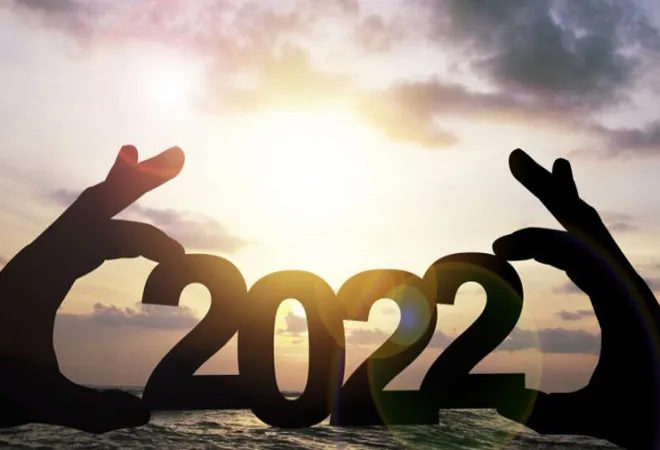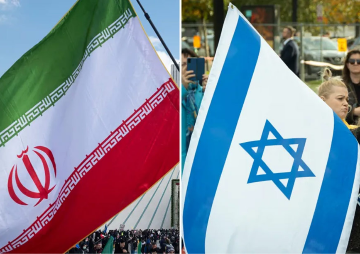
2020 was the year of fear as COVID-19 decimated the economy and killed people–both rich and poor– seemingly. 2021 was the year of hope. The bite of the pandemic dulled, thanks to the massive vaccination programme, ramped-up emergency medical facilities and the roll-out of special social protection measures like free cereals for 800 million citizens. 2022 was the year of realisation and consolidation: The realisation that India remains vulnerable to external threats and that consolidation of past gains into institutionalised resilience requires structural changes in how politics functions, the way capital is allocated and used, and the criticality of enhancing the scope and scale of our medical and educational services, defence preparedness, and energy security.
2022 was the year of realisation and consolidation: The realisation that India remains vulnerable to external threats and that consolidation of past gains into institutionalised resilience requires structural changes
Domestic politics—More of the same
Narendra Modi’s Bhartiya Janata Party (BJP) government in the Union has time till April 2024 to prepare for the next elections—a contest which will be hard to lose. But BJP’s explosive growth has plateaued, both in depth and reach. The consolidation of existing gains seems more likely going forward. One reason is that initially, it did well in states which lacked competitive alternative leadership- Haryana, Uttar Pradesh, Madhya Pradesh, Chhattisgarh, Gujarat, Maharashtra, Goa, Karnataka, and Uttarakhand- states it rules today. The next phase of growth confronts deeply entrenched regional parties in Andhra Pradesh, Telangana, Tamil Nadu, Kerala, Odisha, West Bengal, Jharkhand, Delhi, and Punjab.
Rajasthan and Chhattisgarh, ruled by the Indian National Congress (INC) go to the polls in 2023, as does BJP-ruled Karnataka. We can expect some loving care from the Union government for all three states. Having said that, the BJP commands 303 out of 452 seats in the Lok Sabha- more than two thirds of the votes. It has a strong working majority, sans its allies, giving it the political space for focusing executive attention elsewhere. But will it? Not very likely. The BJP juggernaut is driven by the same failsafe philosophy as Rolls Royce. A “good enough” risk margin is just not enough. It has to be zero political risk.
Continued application of public resources to mobilise public support, not least by directly targeted welfare measures to bind voters to the party is to be expected. It has the fiscal wherewithal, being in power, not just in the Union government but also in nine of the biggest 20 states. But power breeds its own political hubris as illustrated by the creeping expansion of the Aam Admi Party into pole position in Punjab and the deepening of its Delhi roots by taking control of the newly merged Delhi Municipal Corporation after 15 years of BJP rule.
Meanwhile, the Bharat Jodo Yatra (Link Bharat March) left viewers bemused. Rahul Gandhi became the epicentre for a band of bewildered, star-struck followers, which included a previous Governor, Reserve Bank of India, Raghuram Rajan.
Diplomacy- Smart moves
The star diplomat of the year was India’s External Affairs Minister Subrahmanyam Jaishankar who risked offending newly acquired friends in the “Western Alliance” by walking the tightrope between succumbing to their “values-based” call to treat Russia as a pariah, at the cost of eye-watering energy prices at home. Sanctions on the sale of Russian oil and the disruption of gas supplies to Europe sent market prices spiralling. Jaishankar chose to call out the inequity of Europe guzzling cheap Russian oil and gas for decades, whilst forcing petroleum imports-dependent India and other developing economies, to boycott sanctioned cut-price Russian oil to bring President Putin to his knees. For India, retaining access to maintenance arms supplies from Russia is valuable even as it diversifies future commitments to sources within the Western Alliance. More importantly, a weak Russia is in no one’s interest, except China.
Less convincingly, India is tentatively donning the mantle of representing developing country interests, whilst it occupies the rotating presidency of the G20 throughout 2023. It received the baton from Indonesia and will pass it on to Brazil at the end of next year. This is a familiar posture from the Nehruvian era. But its salience in a globalised economy is doubtful when success follows adopting the unambiguous “it is glorious to be rich” mantra. It is similarly unlikely that India could negotiate a peace settlement between Russia and Ukraine—China would scuttle any such attempt to ensure that Indian presence in European affairs remains low-key.
Growth and inflation- moderate success in both
The globe, led by the United States (US), is walking a tightrope between keeping growth expectations alive whilst dampening inflation. A full economic recovery is constrained by the rekindling and possible spread of the pandemic from China to the under-vaccinated populations in Africa where Chinese companies are active. Nevertheless, the abandonment of the failed strategy of stamping out COVID by China will revive global supply chains, increasing the demand for commodities, including energy, and the supply of manufactured products. A frozen conflict in Europe and rekindled economic activity are favourable for India. But the elephant in the room is global inflation and a hawkish Federal Reserve bent on “staying the course” to root out inflationary impulses, unheeding of dragging the rest of the world into a downturn.
RBI Governor Shaktikanta Das was nimble in following the directional lead for higher interest rates set by the Federal Reserve albeit at a reduced pace in sync with domestic “growth- inflation dynamics.” The INR, at risk, when energy prices increase, depreciated from the flight of capital to safe havens, but in a controlled manner. Domestic prices of imported goods and energy increased but effective teamwork between the RBI and the Ministry of Finance rationalized the effective tax rates on imported goods lowering domestic prices, whilst wind-fall gains from energy exports were taxed.
Higher than targeted domestic inflation boosted tax revenues which are being used to enhance welfare outlays to those affected by the economic downturn—albeit in an untargeted manner. The Union government distributes five kilograms of free cereals every month to 800 million citizens, at a cost of around 0.6 percent of the GDP—India’s biggest welfare programme after pensions for government servants. This is a costly affair but it injects additional income into the bottom three quintiles of the population, thereby creating demand for consumer goods.
Analysts assess non-merit subsidies at over 12 percent of GDP in India – enough to substitute myriad family-centric welfare schemes with a substantive direct income subsidy. Doing so also means downsizing the state’s capacity to procure cereals from farmers in North India at remunerative administered rates, thereby, taking away a historical financial crutch for mostly better-off farmers who enjoyed this subsidy since the Green Revolution in 1966-67. Liberalisation of agricultural markets – attempted by the Modi government in 2020 to enhance diversified productivity—provoked a strong, negative pushback. It was abandoned the following year. The stalemate is likely to continue over the near term. Agricultural subsidies on food, fuel, and fertilisers cost around 2 percent of the GDP. It is a cost we pay for not generating enough jobs in manufacturing and leaving families underemployed in agriculture.
Real growth in India, weak even prior to the pandemic, is likely to remain moderate- between 5.5 to 6 percent per year. Consolidation and stabilisation remain Indian priorities in the near term, whilst planners figure out how best to dilute the structural barriers to higher growth. Governance constraints are topmost. Institutions are getting hollowed out via political contestation, too bitter for systemic resolution. The electoral architecture remains incapable of compelling governments to follow a participative, prioritised path for rapidly enhancing public services to acceptable levels. Enlarging the role and size of the private sector, downsizing government functions to core sovereign tasks and limiting the government’s share in the incremental fiscal resources from future growth, remain unchartered waters. In the absence of targeted, failsafe, universal social protection services, inequality is bound to increase with technology-led growth, further fragmenting the social compact in an already heterogenous, multi-lingual, multi-religious, multi-cultural, “recent” democracy of continental dimensions.
Consolidation and stabilisation remain Indian priorities in the near term, whilst planners figure out how best to dilute the structural barriers to higher growth.
India has never been a modern, exporting nation with business smarts, domestic logistics or supportive governmental processes and regulations to match. The Modi government is moving to improve business conditions–decriminalising legislation is one such ongoing endeavour. Improving infrastructural links—air, rail, roads, and ports—has significant momentum. Digitising and networking government processes, from the municipal level upwards, is a mammoth task which is making slow progress. Gati Shakti – a national database of infrastructure projects should be cloned across all budget line items to enhance evidenced oversight over capital outlays and budgetary outturns and speed up audit reports of public sector revenue collection and expenditure.
Close to its tenth year of being in power, Narendra Modi’s BJP Union government can look back with satisfaction. Relentless energy, drive, innovation, and rapid self-correction kept the development momentum going. Looking ahead, laying the technical foundations for institutionalised excellence, would be a better plan.
The views expressed above belong to the author(s). ORF research and analyses now available on Telegram! Click here to access our curated content — blogs, longforms and interviews.



 2020 was the year of fear as COVID-19 decimated the economy and killed people–both rich and poor– seemingly. 2021 was the year of hope. The bite of the pandemic dulled, thanks to the massive vaccination programme, ramped-up emergency medical facilities and the roll-out of special social protection measures like free cereals for 800 million citizens. 2022 was the year of realisation and consolidation: The realisation that India remains vulnerable to external threats and that consolidation of past gains into institutionalised resilience requires structural changes in how politics functions, the way capital is allocated and used, and the criticality of enhancing the scope and scale of our medical and educational services, defence preparedness, and energy security.
2020 was the year of fear as COVID-19 decimated the economy and killed people–both rich and poor– seemingly. 2021 was the year of hope. The bite of the pandemic dulled, thanks to the massive vaccination programme, ramped-up emergency medical facilities and the roll-out of special social protection measures like free cereals for 800 million citizens. 2022 was the year of realisation and consolidation: The realisation that India remains vulnerable to external threats and that consolidation of past gains into institutionalised resilience requires structural changes in how politics functions, the way capital is allocated and used, and the criticality of enhancing the scope and scale of our medical and educational services, defence preparedness, and energy security.
 PREV
PREV


